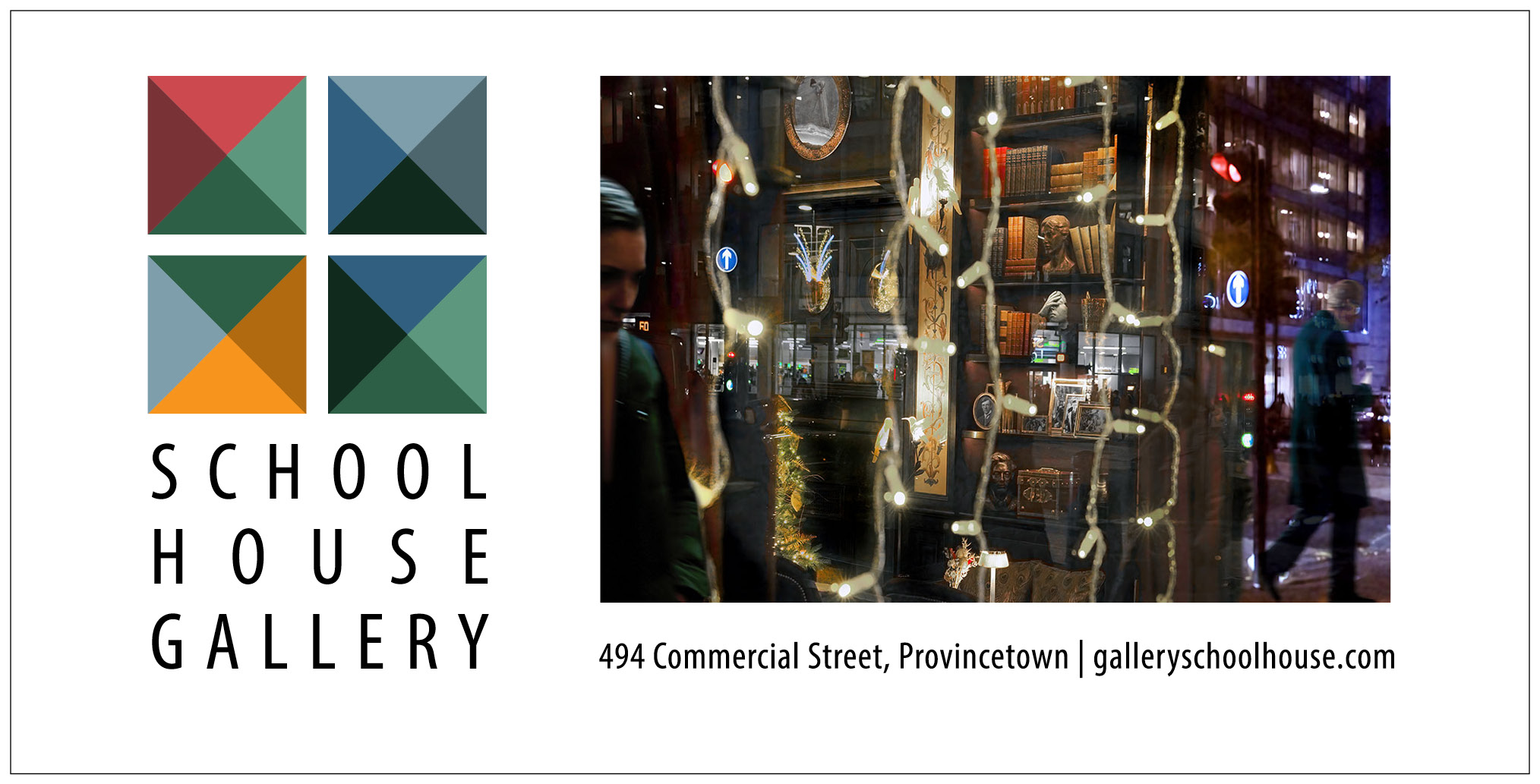Peggy Flaum at Miriam Dretler Gallery
The Miriam Dretler Gallery, one of Provincetown’s newest, at 283 Commercial St., presents an exhibition of Peggy Flaum’s drawings and paintings. The show, which runs until Aug. 3, has a wide range from small landscapes to a series of graphite drawings of trees in the snow to imagery sourced from newspapers.

The winter drawings are deeply felt. She uses graphite, white chalk, and gouache in her black-and-white drawings. The surfaces are physical and thoughtfully touched, while revealing an engagement with careful looking.
Flaum created these works in New York’s Hudson Valley during the pandemic. “It was just me and the trees,” Flaum says. “They were my friends the whole time.”
In another series, Flaum works with photographs from the New York Times as a way of engaging with tragic events around the world. Troubled by how she felt something briefly and then moved on with her day, Flaum created these charcoal-on-linen pictures to “feel things more by spending time with the images.”
In these works, she renders images from the paper on a rough linen surface. The charcoal image struggles to rise from the surface. In More Flooding, an image of a flood in North Carolina, a single tree stands in delicately rendered ripples of water with billowing clouds overhead. The image tells a story of impermanence and the ephemerality of troubling news. —Abraham Storer
Mary Giammarino at Four Eleven Gallery
Mary Giammarino’s plein air paintings are showing at Four Eleven Gallery until Thursday, Aug. 11. The gallery will host an opening for “Earth on Fire: New Paintings by Mary Giammarino” on Friday, July 29.
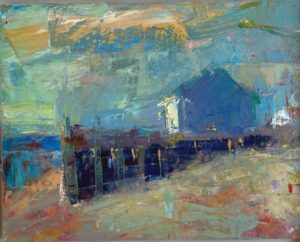
Giammarino has been returning to Provincetown to paint and study every spring since 1989.
Her paintings are impressionistic and dreamy, with skies colored in wide, overlapping strokes. Land is red. Water is purple, white, and gray. The borders of both exist in deliberately hazy detail.
Each painting feels alive with sunlight, like a tree-shaded path on a breezy day.
Titles like Light Is Might, Portal, and Offshore… Wind further indicate Giammarino’s focus on the unfocused. Looking at her paintings and then back at the real world, one might feel suddenly uncertain about the importance of sharp edges, distinct variations of color, and the delineation of inside and outside. —Dorothea Samaha
Lyle Ashton Harris at Albert Merola
At the Albert Merola Gallery in Provincetown (424 Commercial St.), Lyle Ashton Harris premieres his photo exhibition “Hours and Days,” opening on Friday, July 29 and continuing through Aug. 17. The show focuses on youth, sex and love, queerness, and the universal search for happiness.
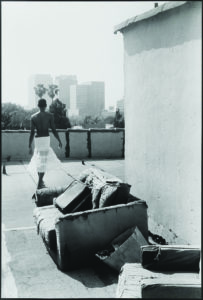
The 10 photographs, black-and-white gelatin silver prints, were taken in the 1980s and ’90s. The lack of color and soft, wispy texture illuminates the tenderness of each scene.
There are only one or two subjects in each photo — Harris and his lovers. The vulnerability of each person comes through plainly.
Harris looks back at the past through the lens of 2022. He says that these photos serve as a respite from the present bombardment of social media images. Here, in the quiet, intimate scenes, one can find both solitude and togetherness. —Eve Samaha
Author Kate Clifford Larson at Wellfleet Library
“I write about ordinary women who face tremendous odds to change the world for good or bad,” says Kate Clifford Larson, who will discuss her book Walk With Me: A Biography of Fannie Lou Hamer on Wednesday, Aug. 3 at 7:30 p.m.
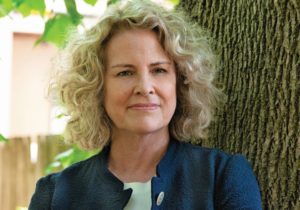
Larson, who has a Ph.D. in history and women’s studies, has written biographies of Rosemary Kennedy, Harriet Tubman, and Mary Surratt.
In the book, she explores how Hamer, “not a likely leader at the time,” rose from oppression and poverty to become an important figure in the civil rights movement.
Larson began working on the biography in 2015 and found that changes in American politics and culture reverberate with Hamer’s story. “I had no idea when I started what would happen over the next four years and the similarities with the 1960s,” Larson says.
She decided to tell the story of Hamer’s sexual assault, which Hamer rarely discussed, in order to “give her a voice.”
“If she was a woman today, she would probably come out and tell her story,” Larson says.
As part of her presentation, Larson will show photographs from Hamer’s life. She intends to engage the broader questions of what makes a leader and how to recognize and support leaders in our midst. —Abraham Storer
Brad Nelson at Room 68
Brad Nelson paints everyday items from the kitchen in a series of sparse compositions on view at Room 68 in Wellfleet (313 Main St.) until Aug. 11.
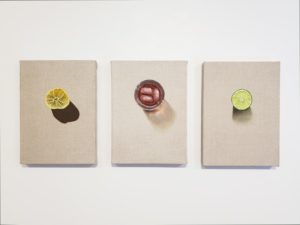
His parameters are tight. On each small linen surface, he paints a single object on the top third. He doesn’t describe the space around the object other than with a single shadow.
In the accompanying text, Nelson writes, “I find subject matter during the daily routines and rhythms of my family, and the roundness of the chosen objects when seen from above reflects the circular nature of the sun’s orbit.”
Nelson’s objects, usually beverages or pieces of fruit, are hyperrealist, described with an academic mastery of light and shadow. Their realism contrasts with the matter-of-fact empty linen. Is the linen a tabletop on which the objects sit? It’s unclear — an interesting feature of the illusion his objects so deliberately create.
On the back of each image, he writes the date he painted the image as well as the time he took to paint it. This gesture, along with the perishable nature of his objects and Nelson’s use of natural light, reflects concerns about the ephemerality of experience, an abiding interest for still-life painters. —Abraham Storer
Charles Upchurch at East End Books
Historian Charles Upchurch will give a talk about his book Beyond the Law: The Politics of Ending the Death Penalty for Sodomy in Britain at Provincetown’s East End Books on Monday, Aug. 1 at 6 p.m. The book lays out Upchurch’s proposition that the first queer political movement in Britain occurred in the 1820s, not the 20th century.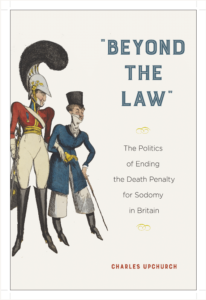
Upchurch traces the true stories of two families who fought for queer rights as well as for the rights of other oppressed groups. It reveals the hidden movement toward an ethical response to sodomy in a time before modern homosexual identity.
Upchurch says that his research may have implications for the hit Netflix show Bridgerton, which is set in the early 1800s and has some queer-coded characters. Ultimately, the book challenges preconceived notions of what was possible in the stereotypically rigid and narrow-minded British society of the early 19th century. —Eve Samaha

